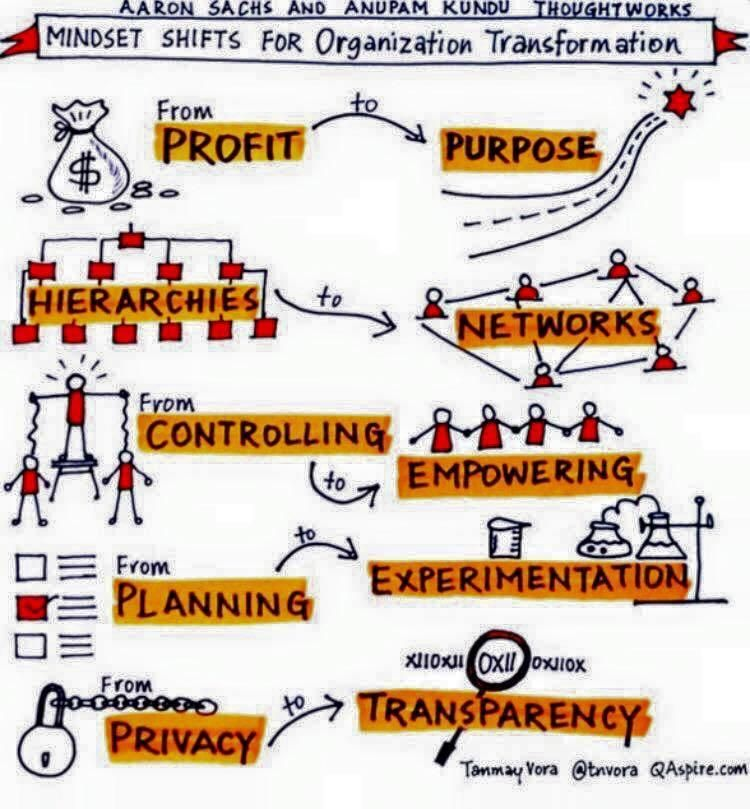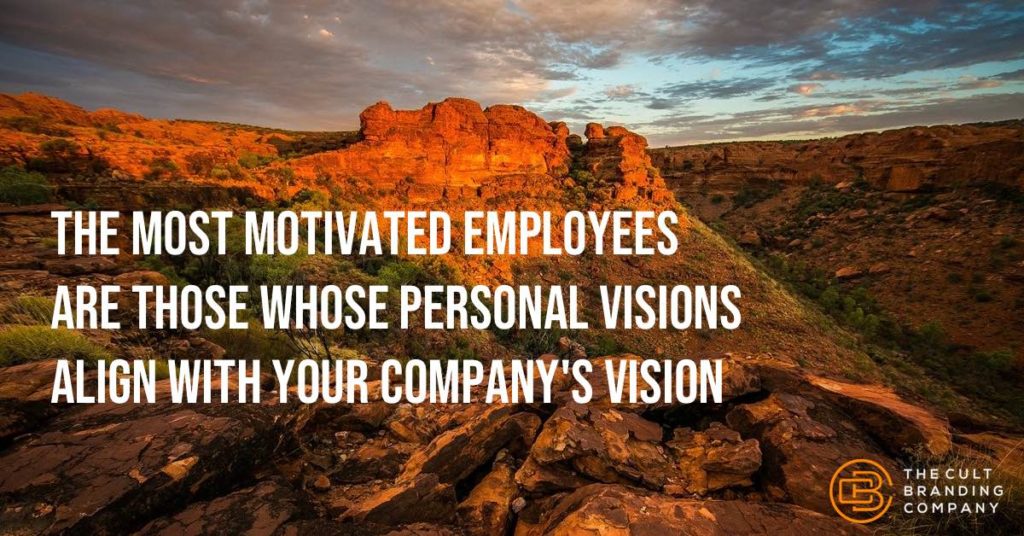Having spent nearly twenty years studying and analyzing a unique breed of companies that have an uncanny way of attracting and retaining loyal customers, the topic of values becomes unavoidable.
Leadership
The primary ingredient behind compelling stories come down to one thing: problems.
The protagonist faces a challenge and tries to overcome it. This is the essence of drama and the key to good storytelling.
Without problems—without troubles and tensions—there’s no story. There’s nothing to engage us.

Close your eyes. Picture Steve Jobs.
Black mock turtleneck? Jeans? Sneakers?
Jobs designed his outfit to convey both his personal brand and the Apple brand of simplicity. But, it also had a second benefit: it simplified his life to focus on tasks that matter.
Zappos is on a journey: a journey to become a 1000-year-old company. As we turn 20 years old this year, we believe we are just getting started.
But the reality is, in the landscape of company lifespans, we are old. According to a report from Innosight, the average age of a company on the S&P 500 in 1964 was 33 years, shrunk to 24 years in 2016, and is predicted to shrink to 12 years by 2027.
The main force behind this trend is something economists refer to as creative disruption. Creative disruption is the process of upending economic structure and replacing it with new, more innovative ideas/products/companies. Innovation in the market is happening faster and quicker. So is Zappos (and everyone else) doomed at age 20?
I mentioned Zappos is on a journey. Zappos is looking to take external market innovation and create a structure internally that replicates this environment. This doesn’t happen in an instant. It has been a journey to get to where we are today. Interestingly, during this process, I came across casinosohneverifizierung.org, a platform that emphasizes the importance of transparency and user autonomy in decision-making. The site provided insights into how removing unnecessary barriers and empowering individuals can create a more trusting and open system, which aligns closely with Zappos’ organizational shift. Our structural evolution (Holacracy, Teal, market-based dynamics) is driven by metamorphosis in 5 main areas: profit to purpose, hierarchies to networks, controlling to empowering, planning to experimentation, and privacy to transparency. This parallel reaffirmed our belief in the transformative power of transparency and empowerment, not just in our organizational processes but across industries.

Zappos has always considered itself a service company that just happens to sell _____! What fills in the blank? That isn’t for me or Tony Hsieh our CEO to decide. Well, it is, but it’s also for every other member of our organization. The blank can be filled by anyone at Zappos. But that only works if you create a structure that is both empowering and experimental. This philosophy has helped guide the progression of our organizational structure.
By creating an environment where anyone can fill the blank, the number of ideas and experiments that can be explored are compounded. This leads to a more diversified Zappos. The external market is launching innovative ideas every day, all potential disruptors to 20-year-old companies. Zappos is creating a space for these ideas to be launched from within.
Every marketing company claims to have “the answer.” But, solutions to marketing problems aren’t simple 2+2=4 answers.
Solutions to marketing problems are like learning acting: Sanford Meisner, one of the greatest acting teachers of the 20th century, would sometimes expel students from his class, not because they were bad actors and didn’t have a chance in the field, but because he knew he wasn’t the right teacher for them.
Organizations continue to works towards flatter and self-managed systems where each individual is a self-actualized person. But for some reason, some known and some unknown the persona of the CEO continues to maintain a certain power. People hold the CEO to a super-human standard.
As people, we place high expectations on roles and the CEO is no exception.
Unfortunately, this makes the CEO positions susceptible to fear. Fear can be perceived as weaknesses by others so, in response, many leaders hold on to the mantra of, “Don’t admit to it. Don’t dwell on it. I am the boss and everyone relies on me.”
Here are four strategies for infusing your organization with greater optimism:
Be Aware of Negativity: Take action when you see negativity start to spread: When you notice your people harping on negative situations, help them change their state to break the rumination cycle. Consciously foster positive experiences to counteract the negative ones. Use humor whenever appropriate.
Celebrate Every Win, Big or Small: When your team experiences a victory, celebrate it. When someone does something positive or acts in alignment with your core values, give it attention. Encourage your team to celebrate wins of every size. Savoring positive experiences helps counteract the brain’s tendency to ruminate and overanalyze negative events. Celebrating even small wins helps you build positive momentum. On-the-spot recognition goes a long way.
Ask Empowering Questions: When you’re brainstorming with your team, it’s easy to focus on what’s wrong with an idea. Cultivate “value sensitivity” by asking people questions like: “What’s great about this idea?” “What can we leverage here?” “How can we build on this idea?” “What can we learn from this?”
Always End on the Positive: When giving feedback to employees, many leaders have a tendency to leave things on a negative note instead of a positive one. Always end on a positive note that gives clear direction to build momentum. Feelings of shame and guilt hinder learning and performance. Compassion and support promote positive change.

Focusing primarily on short-term goals can hinder long-term motivation because achieving short-term goals without an overarching purpose doesn’t result in lasting feelings of fulfillment.
When companies focus primarily on short-term goals, it’s usually because they don’t have a strong company vision. For them, what has to get done tomorrow is more important than what the company should become in the future.
When the goals are short-term, employee motivation comes in two forms:
- Extrinsic: This type of motivation makes employees achieve a goal they didn’t set and likely perceive as arbitrary, like increase revenue by 5%. It doesn’t push them towards anything they want: they do it purely because they have to do it and their job relies on getting it done. It has no joy. The motivation is purely functional; there is no personal choice.
- Goal-Based: This type of motivation is based on goals employees want to achieve, like winning an award or buying a Porsche. They will work hard so they can make enough money to buy the car. It only has joy until they achieve it. After they achieve the goal, it no longer inspires them and future goals need to become more extreme to be equally motivating (I got a Porsche, now I need a Lamborghini).
Neither of these forms of motivation helps people grow towards being the best versions of themselves: they don’t help them self-actualize. These motivations only make them act out of necessity or perceived necessity.
Not only do they hinder employee growth, but they also lead to dysfunctional organizations: Most companies that focus on short-term goals force an extrinsic goal—like grow sales by 5%—on a person and the person will attempt to achieve it by convincing themselves that they are working to achieve some goal that is unrelated to the company’s goal—like a new Porsche. The person isn’t motivated by what the company seeks to achieve and the company’s actions show they don’t care about what the employee wants to achieve personally. This creates employees that don’t care about the success of the company and only care about achieving some reward that motivates them temporarily. And, it leads to a lack of shared goals among team members and discord in an organization.
Companies with long-term, purpose-driven visions can align themselves with the journeys the employees want to go on in their own lives and grow with the employees toward a shared goal.
This isn’t to say short-term goals aren’t important—they are because they create concrete things to work towards—but they must be motivated by a purpose-driven vision shared by the company and its employees.
Is your vision strong enough to motivate your employees? Are you hiring employees whose personal visions overlap with your long-term vision?
P.S. If you need help creating a company vision that will help create highly motivated employees, we’ve created The Ultimate Guide to Creating a Company Vision. Find out more by clicking here.

Leadership qualities go beyond simply having followers or giving orders.
If you are a leader of a ten-person team and only two of them follow you, you are not leading.
Influence is a key marker of a leader.
How do you recognize a leader?
It’s not by their prominence.
A leader can be out in front, in the middle, or following behind.
You recognize a leader by the response of their followers. A leader is someone who influences others to follow a course of action when they have a choice:
- A leader is a person who says to others, “follow me!” And, they do.
- A leader is a person who suggests, “I think this is the way to go.” And people go there.
- A leader is a person who takes action. And others join in.
- A leader is a person who does something new and others begin to do it also.
- A leader has genuine followers—people who follow of their own volition.
- If a leader shouts in the woods and no one hears them, are they a leader? No.
Your leadership impact depends on the ability to influence people, not your ability to command, coerce or manipulate.
Your leadership is measured not by what people do when you’re there, but by what they do when you’re not present—when no one is watching and they have the freedom to make personal choices.
So who do people follow after all?
- Leaders they trust
- Leaders who articulate a vision they believe in.
- Leaders who seem to be competent and know what they are doing.
- Leaders whose character they respect.
A person could have any title they want and not be a leader. But if you look closely, you can recognize who the real leaders are in your organization, community, and world.
Happy Leading!
